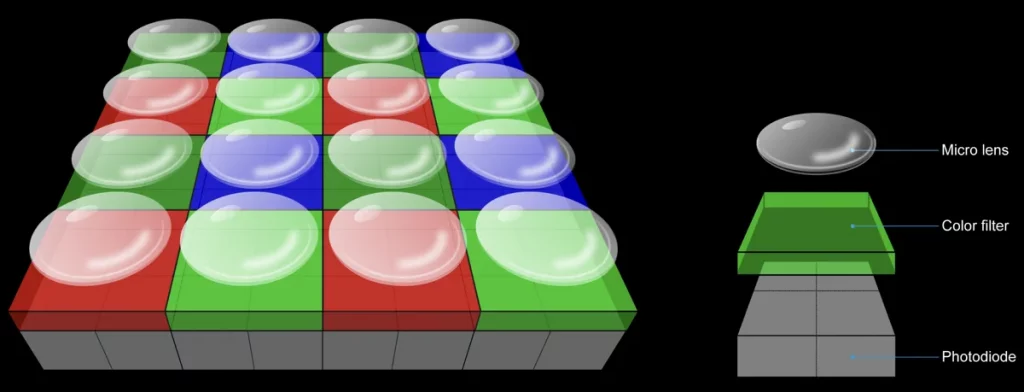The OM System OM-1’s autofocus performance is discussed in contrasting ways on the web. There is former brand ambassador Robin Wong in his video “OM SYSTEM OM-1 – Where Is The Wow?” that the OM-1 autofocus is slower than that of the E-M5 Mark III. In response, Peter Forsgard (then still an OM System brand ambassador) said in his video “OM-1: Let’s Talk About S-AF” that this is not the case. As a user, you might ask yourself who is right. With this small autofocus guide I try to bring a little light into the darkness.
The crux of autofocus is that this is not so clear as the performance of the autofocus depends on many things. The settings are one point. But the use case and the skill of the photographer should not be underestimated either. In addition, the technologies can differ. This can of course lead to a deterioration in one use case, but to an improvement in another.
I will certainly not prove one or the other right here. Rather, I want to explain the individual settings, so that everyone can adjust the camera according to his use case. My goal is to put everyone in a position to assess which setting may help to solve a problem.
Autofocus types
Two different types of autofocus are used in photography. One is phase difference AF and the other is contrast AF. The latter was used exclusively in the mirrorless cameras of the first generations until technology allowed phase difference AF to be integrated directly on the image sensor. Below is a brief explanation of how the two systems work. If you want to understand the topic in detail, there is a good article at Elmar Baumann that is a bit outdated, but summarizes the topic well.
Contrast autofocus
Contrast AF works according to a very simple principle. An image is sharp when it has the highest possible contrast. This is what Contrast AF is based on. But the camera continuously measures the contrast and reports a sharp image at the contrast maximum. However, there are two basic problems that make this method slow. First, the camera only knows if it is focusing in the right direction after it has already started focusing. So in the worst case it has to stop and reverse the direction. Secondly, a maximum can only be detected by moving over the maximum during the measurement and then returning to the maximum. Both have the consequence that the contrast AF is slower than the phase difference AF.

Phase difference autofocus
Phase difference autofocus has basically been used since the introduction of AF SLR cameras. SLR cameras have always had a separate sensor. In mirrorless system cameras, the principle was integrated into the imaging sensor itself. The Olympus E-M1 (first generation) was one of the first cameras with this technology.
With this technology, you look at the same point from two slightly different perspectives. Similar to the eyes. Two slightly offset sensors create the same effect. If both images are congruent, the image is sharp. But this technology allows much more. Depending on the difference between the two sensors, it can be determined in which direction to focus and how far the lens has to be adjusted. Thus, in contrast to contrast measurement, only two measurements are actually necessary. One when moving off and one when arriving at the calculated position to verify if the image is really sharp. This makes this technology faster than the contrast AF technology.

Autofocus system of the OM-1
The OM-1 uses both autofocus systems depending on the setting and uses one or both systems depending on the situation. However, not always both at the same time. The S-AF mode uses the contrast AF for focusing and uses the phase difference AF only to improve the accuracy. In C-AF mode, as long as there is enough light, only phase difference AF is used. If the value falls below a certain value, the contrast AF is used, because it has a higher light sensitivity. However, this leads to poorer accuracy because contrast AF is not as well suited to the C-AF application as phase difference AF.
In addition, intelligent object recognition supports the autofocus system in both S-AF and C-AF modes. Incidentally, face detection is also a type of intelligent object detection, but it is not called that in the OM-1 because, unlike object detection, it is not based on the evaluation of an infinite number of images, but on pattern recognition. Technically it is something else. You can find more details in my article “Intelligent Object Recognition of the OM SYSTEM OM-1“
Phase difference AF of the OM-1
The OM-1 has a so-called Quadpixel Bayer Pattern Sensor, i.e. each pixel is divided into 4 subpixels that are controlled separately. This makes it theoretically possible to use each pixel as a phase difference sensor. In reality, however, there are “only” 1053 focus points, because the distance between the two phase difference sensors must be as far apart as possible for AF. Since you can also draw diagonally, cross sensors can be realized with this sensor that have fewer problems with purely horizontal/vertical structures.

The AF system of the OM-1 uses normal image pixels (the E-M1 Mark II and E-M1 Mark III still had independent sensors for focusing) and therefore cannot collect AF information while the image is being read out – this was still possible with the previous cameras. This could be a possible cause if one or the other user feels that the C-AF of the OM-1 is a bit less precise. Due to the improved readout and processing speed and the support of the intelligent object detection, this certainly does not make much of a difference.
In the next part I will deal with the AF settings of the OM-1. If you have any questions or want me to write about certain functions of the AF system, please leave me a comment.




Pingback: Autofocus guide OM-1 - AF limiter - Michael Guthmann
Pingback: Autofocus guide OM-1 - Differences between C-AF and C-AF+TR - Michael Guthmann
Pingback: Auto focus Guide OM-1 - AF customisation - Michael Guthmann